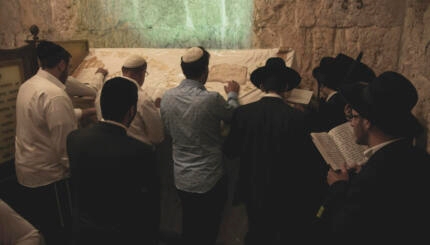Reprinted with the author’s permission from Jewish Law: History, Sources, Principles (Jewish Publication Society).
Halakhot Pesukot [Settled Laws], written shortly after Sefer ha-She’iltot, and attributed to Yehudai Gaon, is the first classic example of a book of halakhot.
Yehudai Gaon was one of the great personages of the geonic period. He was associated with the academy of Pumbedita; but when the gaon of the academy of Sura died and there was no scholar of Yehudai’s stature there, Exilarch Solomon b. Hasdai appointed him head of the academy at Sura.
Yehudai was the first gaon to establish communication with Jewish communities in North Africa (Tunisia, Algeria, and Morocco); he also held discussions on various halakhic matters with the halakhic authorities of the Land of Israel, whom he considered bound by the authority of the Babylonian scholars in regard to determining the law. He is also the first gaon from whom many responsa–more than one hundred–have survived. These are characterized by extreme brevity, an indication of his great authority.

Help us keep Jewish knowledge accessible to millions of people around the world.
Your donation to My Jewish Learning fuels endless journeys of Jewish discovery. With your help, My Jewish Learning can continue to provide nonstop opportunities for learning, connection and growth.
Emphasis on Practical Issues
Halakhot Pesukot decisively influenced succeeding generations and opened a new era in codificatory literature. The book encompasses all parts of the halakhah then applicable and is arranged by subject, e.g., sabbath, festivals, Passover, interest and usury, loans, ketubbot, betrothal, divorce, etc.
It does not include laws then totally inapplicable or laws applicable only within the Land of Israel and hence not followed in practice in Babylonia, such as the commandments directly relating to the Land of Israel (e.g., the various tithes and the sabbatical year) and the laws of sacrificial offerings and ritual purity. Thus, Yehudai Gaon set an example for all subsequent codificatory literature, which, with limited exceptions, was also confined to codifying only the law having practical relevance at the time the books were written.
Style and Organization
From the standpoint of both style and organization, Halakhot Pesukot is a book of halakhot. The final halakhic conclusion is generally preceded by a concise precis of the talmudic sources upon which the conclusion is based. The subjects are for the most part arranged in the order of the tractates of the Talmud, in consequence of which all the material on a particular subject is not always brought together. Written originally in Aramaic, the book was translated into Hebrew; according to most scholars, the translation was done in the Land of Israel.
Influence of Halakhot Pesukot
Halakhot Pesukot substantially facilitated halakhic research. This advantage, together with the recognition of the great authority of the author, led to its rapid and widespread circulation throughout the diaspora. Many copies were made, and various abridged versions of it were composed, such as Halakhot Ketu’ot ("Cut" Halakhot), Halakhot Kezuvot ("Cut", "Fixed," or "Set" Halakhot), Halakhot Ketannot (Abridged Halakhot), and others.
Halakhot Gedolot
Two generations later, in the ninth century C.E., a book of halakhot was written that was the largest, in size and scope, of the geonic era, namely, Halakhot Gedolot. According to most halakhic authorities, its author was Simeon Kayyara, whose surname means "wax vendor" (from keira = wax). He lived in Basra, Babylonia.
Halakhot Gedolot, before stating the governing law, briefly presents the sources. Its organization follows the order of the tractates of the Talmud. Its arrangement is in general similar to that of Halakhot Pesukot, except that it subsumes more of the material culled from a variety of sources under specific subject headings, sometimes even establishing nomenclature for new legal topics.
It also includes some laws relating to commandments that no longer had practical relevance when the book was written, such as various laws relating to sacrificial offerings. Important sources for Halakhot Gedolot include, in addition to the Talmud, Halakhot Pesukot, Sefer ha-She’iltot, and geonic responsa.
Preface to Halakhot Gedolot
Halakhot Gedolot is also noteworthy in that it is the first Hebrew book with a preface. Moreover, the preface itself is unusual in that it says nothing about the nature and purpose of the book. The preface has two parts: (a) praise of the and its students, based on various scriptural verses and aggadic sayings; and (b) a list of the 613 commandments divided into 365 negative and 248 affirmative commandments.


